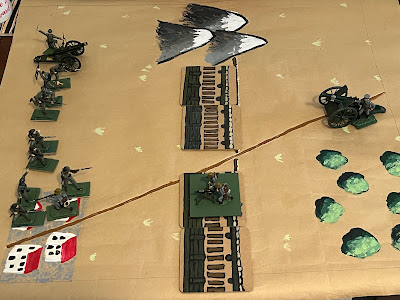I recently finished reading Morale and the Italian Army During the First World War by Vanda Wilcox.
Looking back at my blog, I see that I acquired it a little over a year ago, just before I traveled for my dad's funeral. I started to read it at some point - I don't think it was on that trip despite my intentions, but I did start it earlier this year.
And then stopped - no fault of the book, I just had too many other books going at the same time. In fact, once I started it this time around, I found it difficult to put down.
(for the tl;dr you can scroll down to the Conclusion section)
Why the (mostly) peasant soldiers fought at all, often with valor, for years, in terrible
conditions, is one thread driving the inquiry of this book. The other
thread being the converse - what drove these men to perform acts of indiscipline, when they otherwise tended to be
resigned to do what they were ordered or what duty commanded,
Recall that Italy had only been a united country for a little over 50 years
at the time.
Duty was owed to the farm, the family, the Church, and the
village long before it was ever owed to the state. Indeed, peasant males
had only been granted the right to vote in one election prior to the war
(I may be quoting the number incorrectly, but it wasn't much more if
not just one). It is on the negotiation of this complex web of expectation and duty that Wilcox focuses.
To facilitate the examination of the factors involved, the book is helpfully split into two parts.
The first looks at the role of systems external to the soldier - the military organization itself and the society in which it, and more importantly, the soldiers, existed. Official histories and studies of morale and discipline form the bulk of the footnotes here.
The second part deals with the internal - the psychology and personal beliefs of the soldier - and how they see things themselves (which, of course, is deeply effected by the military and the society from which they come), supported by heavy reliance on diaries and letters.
Throughout the book, the Italian army (both its policies but also the psychology of the soldiers) is compared and contrasted to other armies during the same period. If your primary interest is in another Entente or in one of the Central Power armies, they probably make more than one appearance either in the main text or in one of the many footnotes.
Not surprisingly, Italy's draconian system of discipline doesn't come out unscathed and not just in hindsight. Compared to the other nations in the war, the Italian approach to morale and discipline throughout much of the war was unenlightened and inconsistent at best.
Cadorna - who blames socialism and defeatism in the ranks for failures of command - gets a fair amount of well-deserved criticism, while Diaz, unsurprisingly, receives a more positive assessment (though he doesn't escape criticism). This is pretty standard - although I know he has his supporters, no author I have read has praised Cadorna without reservation. On the other hand, Diaz often gets plenty of praise and back slapping simply for not being as inhumane as Cadorna (a low bar if ever there was one).
At times, the text is academic (i.e., dry) but still eminently more
readable than most Osprey titles in my opinion, and I am inclined to seek out other works by the author as I find their tone and writing style suits me.
The bibliography is vast
and varied, and I've already been looking out for copies of the English-language
titles.
Unfortunately, for me and anyone else who does not read Italian, many, if not most, of Wilcox's sources are written in Italian, even excluding the personal diaries and private letters which are obviously so. Despite the limits this imposes on my follow-up reading, I find this citation of a mass of Italian-language sources lends additional credence to the
arguments Wilcox makes.
Conclusion
In case you're wondering if this is a book for you:
For a wargamer, there is little here directly
applicable to most wargames' tables. The one exception I can come up
with is through the use of chance cards, which could bring in morale
effects thematically tied to reasons given in the book. But you probably don't need this book to imagine some of them.
If
your interest in WWI is casual or at a higher level - the causes and effects of the war generally,
big personalities, major battles - or you are hoping to find a source of scenarios for a wargame,
this book is not for you.
However, if you're interested in the
discipline and morale questions of "what makes soldiers follow orders"
or conversely "what makes soldiers act with indiscipline"
with or without emphasis on the Italian army of WWI, there is something here
for you.
If you, like me, are invested in learning about the Great War
as fought on the Southern Front, and you've already read one of the many overview books on the subject (if, for example, Caporetto is news to you, perhaps don't start with this title), then this is a must read for a deeper dive.




















































